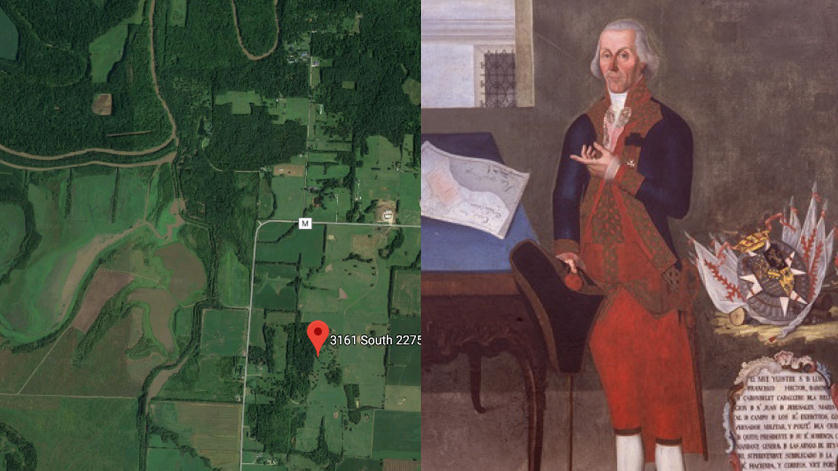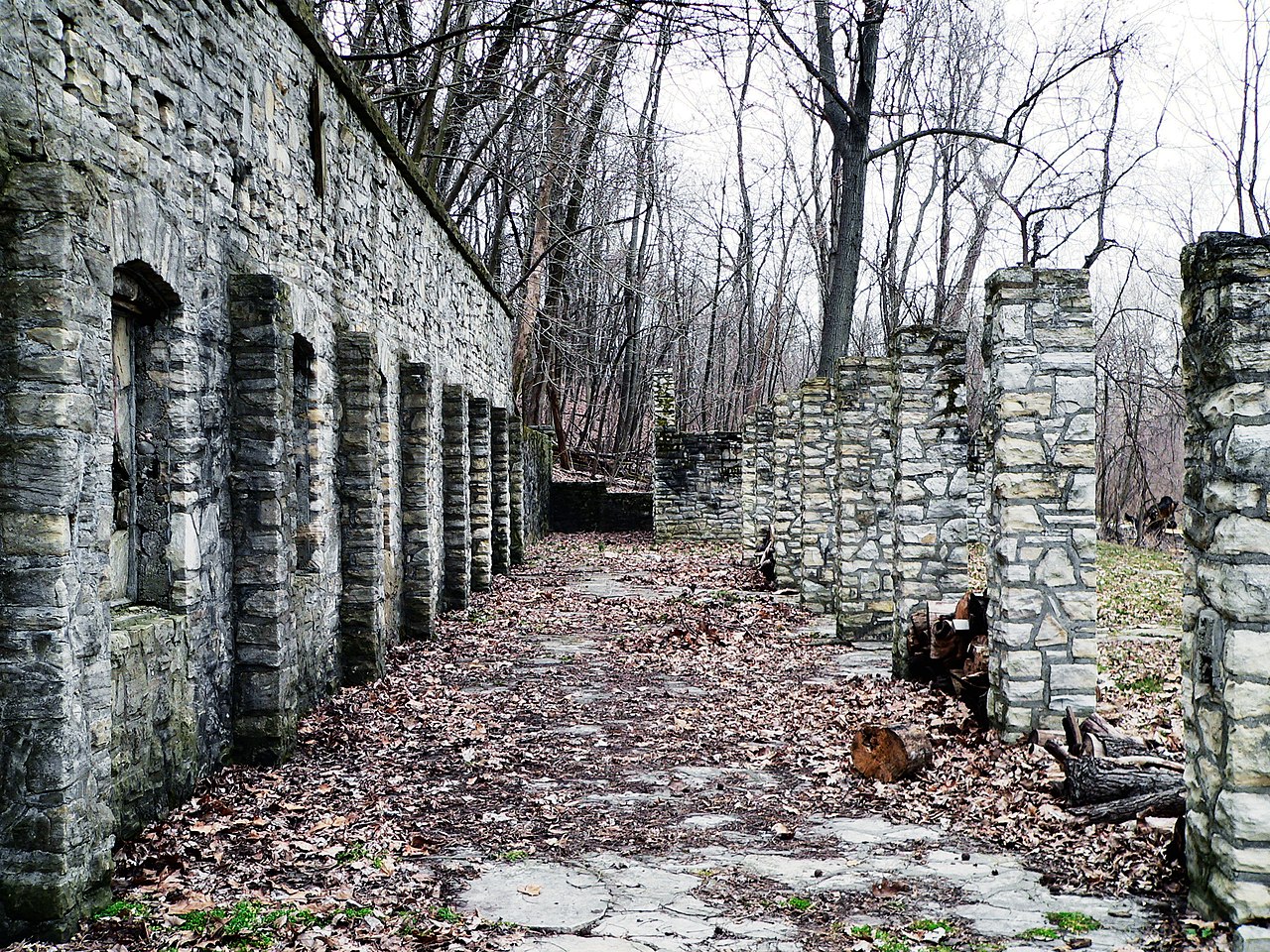
The Silent Sentinel: Unearthing the Legacy of Fort Carondelet, Missouri
On a bluff overlooking the mighty Mississippi River, where the industrial hum of St. Louis now dominates the landscape, once stood a formidable earthen bastion known as Fort Carondelet. A crucial, though often overlooked, component of a vast defensive network, this Civil War-era fortification was part of the "Ring of Steel" that protected St. Louis, Missouri – a city whose strategic importance during the conflict could scarcely be overstated. Though its physical remnants are largely swallowed by time and urban sprawl, Fort Carondelet’s story offers a compelling glimpse into the anxieties, ingenuity, and strategic foresight that defined the Union’s struggle to hold a vital border state.
St. Louis: A Powder Keg on the Mississippi
To understand Fort Carondelet, one must first grasp the perilous position of St. Louis in 1861. As the nation’s eighth-largest city, a bustling river port, and a critical industrial hub, St. Louis was the gateway to the West. It boasted a significant arsenal, vital railroad junctions, and a large, diverse population – a volatile mix of German immigrants fiercely loyal to the Union, pro-slavery Southern sympathizers, and old Missouri families with divided allegiances. The state itself was a microcosm of the national conflict, teetering precariously between secession and loyalty.

Early in the war, the Union cause in Missouri seemed on the brink. Governor Claiborne Fox Jackson openly favored secession, and a well-armed, pro-Confederate militia, the Missouri State Guard, was actively training. The city’s Unionists, led by figures like Francis P. Blair Jr. and Captain (later General) Nathaniel Lyon, recognized the imminent danger. Lyon’s daring capture of the State Guard at Camp Jackson in May 1861, followed by the "St. Louis Massacre" where federal troops fired into a hostile crowd, ignited the state and solidified the Union’s precarious hold on the city.
It was into this volatile environment that Major General John C. Frémont, the famed "Pathfinder" and first Republican presidential candidate, arrived in July 1861, tasked with commanding the Department of the West. Frémont, though later criticized for his administrative shortcomings and political missteps, possessed a keen strategic mind. He immediately understood that St. Louis, with its arsenal, its river access, and its rail lines, was indispensable. Losing it would be a catastrophic blow to the Union war effort, potentially opening the entire Mississippi Valley to Confederate incursions.
Frémont’s Vision: The Ring of Steel
Frémont’s solution was audacious and far-reaching: a massive defensive perimeter of forts and batteries encircling the city. His vision, dubbed the "Ring of Steel" or "Frémont’s Forts," called for over 40 distinct fortifications, stretching for miles in an arc from the bluffs north of the city to the southern reaches of Carondelet. This network, designed to deter and repel any Confederate assault, would transform St. Louis into an impregnable fortress.
The task was immense. Thousands of laborers, both civilian and military, including a significant number of newly freed slaves and Irish immigrants, were pressed into service. Under the direction of skilled engineers, they toiled tirelessly, digging trenches, raising earthen walls, and clearing fields of fire. The forts were primarily earthworks – massive mounds of compacted soil, reinforced with timber, designed to absorb the impact of artillery shells. These were not the stone fortresses of old, but pragmatic, rapidly constructed defenses suited to the immediate threat.
Fort Carondelet: A Southern Bastion
Among these vital fortifications was Fort Carondelet, strategically positioned on a commanding bluff in what was then the independent city of Carondelet, just south of St. Louis proper. Its location was carefully chosen to protect several critical assets:
- The Mississippi River: From its elevated position, the fort could command a wide stretch of the river, crucial for monitoring Confederate movements and protecting Union shipping.
- The U.S. Arsenal: A vital manufacturing and storage facility for arms and ammunition, the St. Louis Arsenal was a prime target for the Confederates. Fort Carondelet provided a key layer of defense for this irreplaceable asset.
- The Iron Mountain Railroad: This railroad, running south from St. Louis, was essential for troop movements and supplies, particularly for accessing the lead mines and iron furnaces further south in Missouri. Fort Carondelet guarded a critical section of this line.

Construction on Fort Carondelet began in late 1861, part of the initial wave of fort building. It was an extensive complex, covering approximately ten acres, with an irregular shape designed to conform to the contours of the land and maximize defensive angles. Its earthworks, some towering over 20 feet high, were formidable. Inside, the fort housed barracks for troops, magazines for ammunition, and emplacements for a battery of heavy artillery. Records indicate it mounted large-caliber guns, including 24-pounders and 32-pounder siege guns, capable of inflicting devastating damage on any approaching force.
The troops garrisoned at Fort Carondelet were a mix of U.S. Volunteers and state militia, their numbers fluctuating with the perceived threat. Life within the fort was a monotonous routine of drills, guard duty, and the ever-present anticipation of an attack that, thankfully, never came. Yet, this very absence of direct combat underscores the fort’s success.
The Power of Deterrence: The Unfired Shot
Historians widely agree that the "Ring of Steel," including Fort Carondelet, achieved its primary objective through deterrence. While no major Confederate assault ever directly challenged the fortifications of St. Louis, their very existence sent a clear message. The sight of these massive earthen bastions, bristling with artillery, presented an insurmountable obstacle to any would-be attacker.
"The very presence of these formidable defenses acted as a powerful deterrent, signaling to Confederate commanders that St. Louis was not a prize easily won," notes historian William C. Winter, an expert on Missouri’s Civil War fortifications. "The investment in these forts, though costly, effectively negated a major Confederate strategic objective, allowing Union forces to concentrate on offensive operations elsewhere."
This success meant that the soldiers of Fort Carondelet, unlike their comrades on the front lines, rarely heard the roar of enemy cannon or faced a direct charge. Their war was one of vigilance, of endless waiting, and of the quiet, disciplined maintenance of a powerful defensive posture. This "unfired shot" strategy freed up thousands of Union troops who would otherwise have been tied down defending the city, allowing them to participate in crucial campaigns in the Western Theater, such as those along the Mississippi River or in Arkansas.
Erosion by Time and Progress
With the end of the Civil War in 1865, the strategic imperative for the St. Louis forts vanished. The federal government, eager to reduce military expenditures and return land to civilian use, began systematically dismantling them. The earthworks, once symbols of formidable power, were quickly leveled. Lumber was salvaged, guns were removed, and the land was sold off for development.
Fort Carondelet, like most of its sister forts, rapidly faded from the landscape. The thriving industrial and residential expansion of St. Louis, particularly in the late 19th and early 20th centuries, inexorably consumed the land it once occupied. Streets were laid, houses were built, and factories rose, erasing almost all physical traces of the massive fortification. Today, locating its exact boundaries requires careful historical mapping and a keen eye for subtle changes in topography.
Echoes in the Modern Landscape: Preserving a Forgotten Past
Despite its physical disappearance, the legacy of Fort Carondelet and the "Ring of Steel" endures. Its story is a testament to the crucial role of infrastructure and strategic planning in wartime. It reminds us that victory is not always won on the battlefield, but sometimes in the construction trenches, in the foresight of commanders, and in the sheer will to defend vital assets.
While no grand ruins mark its location, efforts have been made to remember Fort Carondelet. Historical markers, often placed by local historical societies or the city’s parks department, provide snippets of information, helping to orient curious visitors to where these silent sentinels once stood. Carondelet Park, a sprawling urban oasis, lies near the fort’s historical footprint, though the park itself was established years after the fort’s demise. The very street names and neighborhood boundaries in the area often echo the old city of Carondelet and its historical significance.
Historians and local enthusiasts continue to research and document these forgotten forts, piecing together their stories from old maps, military records, and newspaper accounts. This ongoing work is vital, as it ensures that the sacrifices and strategic genius behind Fort Carondelet are not entirely lost to the sands of time.
Fort Carondelet, a name that evokes a bygone era of conflict and defense, serves as a powerful reminder of St. Louis’s pivotal role in the American Civil War. It stands as an invisible monument to the determination of the Union to hold the border states, to the ingenuity of military engineers, and to the silent, often unheralded, work of thousands of laborers and soldiers. Though its earthen walls have long since returned to the soil, its story remains, a testament to a time when a city on the Mississippi braced for war, protected by a ring of steel and the silent vigilance of its forgotten forts.


